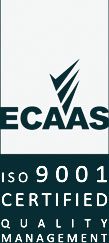In 2018, ADA NSW formed a partnership with North Coast Primary Health Network, the NSW Health Centre for Oral Health Strategy and the University of Sydney. The aim of the joint project is to assist with the review, localisation and creation of new oral health content in HealthPathways.
The major objectives of the project are to facilitate structured referral pathways from medical GPs and allied healthcare clinicians to dentists and appropriate oral health services available within NSW. By providing current oral health content and highlighting steps to assist clinicians in finding the appropriate private and public oral health services within their local community, it raises awareness of the importance of oral health for general health. This leads to better health outcomes, particularly in target groups and a potential reduction of preventable hospitalisations in NSW.
This venture supports a part-time oral health editor for the Mid and North Coast HealthPathways portal. The editor is one of our members – Dr Roshan Abraham, local dentist from Kempsey. Roshan started in the position in May 2018 and has been making great progress throughout the year. He began by auditing, reviewing and updating the content of existing oral health pathways, including early childhood caries and dental trauma. Stage 2 involves the localisation of pathways, ensuring that there are clear and current management and referral pathways for clinicians to follow for their patients.
Roshan is now moving on to an extremely important and exciting part of the project. He will edit existing general health pathways such as diabetes and cardiovascular diseases, to raise awareness of the links between oral health and general health amongst the local health clinicians. This will not only ensure that patients’ oral health needs are addressed, but it will create stronger relationships between the general health and oral health services within the community.
As all the content that is developed and published is shared amongst the whole HealthPathways community, the work being done in this one Primary Health Network does not just benefit this particular community but can be readily adapted and localised in all other PHNs throughout NSW, the ACT, Australia and even the UK.
During this project, a small working group consisting of members from each organisation has been meeting regularly with Roshan to discuss progress, offer support and expertise and maintain strong relationships between key stakeholders. Further updates and interesting resources from HealthPathways will be featured in future editions of NSW Dentist. For any further information on how to access this valuable resource contact ADA NSW on [email protected] or visit your local PHN website.
This article was originally published in NSW Dentist, Feb 2019.
For a list of all localised pathways see:
Mid and North Coast HealthPathways
Username: manchealth
Password: conn3ct3d
For further information email [email protected] (MNC) or [email protected] (Northern NSW).



